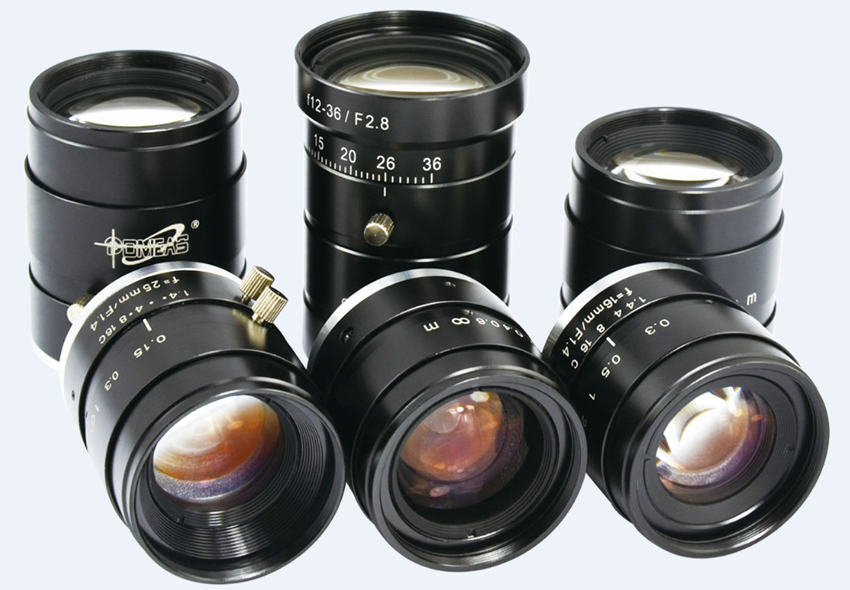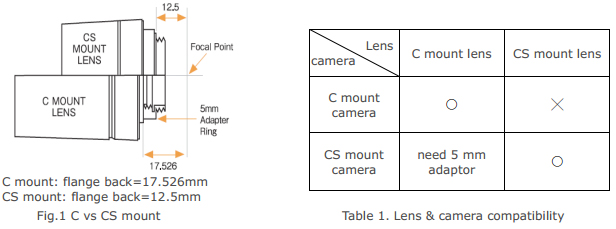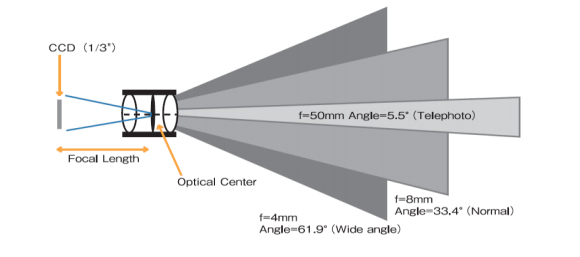
IP camera guide: how to select a megapixel lens?
Lens plays an important role for high quality image in a surveillance system, especially in the mega-pixel IP world. The performance of IP camera highly relies on the lens quality. Inappropriate lens may cause poor picture performance because user didn't choose a correct lens for IP cameras. Before purchasing the IP camera, you need to conduct the initial survey. Lens survey doesn't only mean choosing a lens which will cover correct field of view, although this is an important factor, but also need to care the overall image quality after lens installed. In this article, we will share some information that shall be considered when choosing a lens for megapixel surveillance camera.
Optical specification
We should know that the lens optical specification should comply with the size of image sensor, with dimension a little bigger than image sensor.
For example: For 1/2” sensor, a lens with optical size >= 1/2” shall be selected.
For 1/3” sensor, a lens with optical size >= 1/3” shall be selected.
If lens optical format is less than that of a sensor, a dark image on corner may occur.
Lens resolution
For traditional analog CCTV cameras, the lens resolution is not a problem for selection of lens, because traditional analog CCTV cameras only captures 960H and below resolution images. However, the security camera resolution has upgraded to megapixel level due to quick evolution of imaging technology, so choosing a resolution compatible lens for current megapixel IP camera has become an important requirement to guarantee the overall high resolution output.
Depending on resolution, there are D1, 2 megapixel, 3 megapixel, 5 megapixel, etc lens avaialable in the market.
For example:
To select a lens for Hikvision DS-2CD4026FWD-A 2MP IP Camera, the candidate shall have resolution >= 2 megapixel. Although you can select much higher resolution lens such as 5 megapixel, however we would not recommend because it far exceeds the specification requirement and cost much.
C and CS mount Lens
For box style IP cameras, you can choose two types of lens mount: C and CS mount, with the flange back length 17.526 and 12.5 mm as indicated in Fig.1 below. A CS mount lens can only be used with a CS-mount camera, a C mount lens can be used with a C mount camera, or with a CS mount camera plus a 5mm adapter, but CS mount lens to C mount camera is prohibited.

Lens Type
Also, we can categorize surveillance camera lens into two types: one if manual iris and the other one is auto iris type. Manual iris lens is good for environment with stable lighting condition, while auto iris lens, with the ability to adjust the iris to keep constant video level, is good for environment where lighting condition may vary.
According to their driving method, you can find two kinds of auto iris lens
- Direct drive type: controlled by direct-current (DC) driving signals from camera.
- Video drive type: controlled by video signal with separate power from camera.
Typically, we suggest user to use auto iris lens for getting optimal image quality especially in the following surveillance conditions.
In a large field with bright illumination such as a sunny day, an auto iris lens guarantees longer depth of field than using a fixed iris lens. That is to say, we can have clear and sharp image in all the filed.
Focal Length
In summary, we can have wide angle of view with a short focal length lens, and narrow angle of view with a long focal length lens.

The reality is the focal length depends on how far the object is and what the size of the object we preferred. We give an example that will show you how to calculate lens focal length based on field requirement.
In this example, we assume the sensor is 1/2” with size (h, v) = (6.4, 4.8) mm. By similar triangle rule, it is easy to calculate the required focal length f by the following formula.

Lens F-Number
What's F-Number? In optics, the f-number (sometimes called focal ratio, f-ratio, f-stop, or relative aperture) of an optical system is the ratio of the lens's focal length to the diameter of the entrance pupil. F-number represents the amount of light passing through the lens, with smaller number for allowing more amount of incoming light.
The rule of thumb for selecting a lens is to select that with smaller F#, because it has bigger aperture and can pass more amount of light, which will in turn help to have better S/N and improve the sensitivity character.
Note: Bigger aperture may result in shorter range of depth of field, which is not good for video surveillance requirement. At this time, an auto iris lens is a good selection to overcome such problem, because the iris will adjust automatically for optimal video level.
IR Correction
An IR corrected lens is required for a day and night camera to avoid focus shift if an IR illuminators are in action at night time to provide additional lighting, because the focus point is different for visible and infrared light.
Lens Technology
Vari-Focal Lens: vari-focal lens offer the wide range of focal length from 2.3mm to 160mm, including Infrared corrected capability on IR corrected vari-focal lens.
IR motorized zoom lens: IR corrected lens are based on its optical design not only IR coating. The focus in infrared field is created to keep the same focus position in visible light, therefore no need to re-adjust focus again at night once focus sets up at day time. These lenses have auto iris capability and have a focal range of up to 240mm. These lenses are made of premium materials for durability and optimal performance.
Auto-Focus Motorized Zoom Lens: the lens will keep focusing to a new object wherever the lens moves, according to the feedback of the video data from camera and re-put it to lens control mechanism. The auto-focus motorized zoom lens offers you the best performance and intelligent combination of optical, mechanical and electrical technologies.
Reference
Links: http://www.hkvstar.com/technology-news/choosing-lens-for-video-surveillance-camera.html
http://www.hkvstar.com/technology-news/cctv-security-camera-lens-calculator.html
Get My Latest Posts
Subscribe to get the latest updates.
Your email address will never be shared with any 3rd party.